|
Click picture for larger image
|
|
The 14 bolt
drum is heavy. The disk brakes shed 70lbs off the
axle. |
The setup is actually fairly easy. It consists of the following parts:
Rotors
We used 80-90 Ford F-250 rotors. TSM had to enlarge the 8 lug holes or you had to grind just a little off your studs to make the rotor fit. The new TSM kits require 73-87 GM ¾ ton rotors which require no modifications.
Calipers
76-78 Cadilac Eldorado calipers are used. These calipers have an integral parking brake so a parking brake can still be used. You can also use GM truck calipers but there’s no provision for an e-brake. The Cadilac calipers are sometimes expensive at certain parts stores so be sure to shop around. Be aware the core charge can be expensive, and the new Caddy calipers will not come with the required spring and e-brake arm so it’s better if you can find the cores at the salvage yard.
Brackets
These brackets hold the calipers in place. TSM makes the brackets which now have a newer design. The newer design allows the use of GM rotors. We used the older style which require the Ford Rotors.
Caliper Bolts
You can usually find these at the salvage yard or any parts store. TSM calipers will come with these. These have an allen head with threads close to the head and the rest of the bolt is smooth with no threads.
Brake Pads
New pads must be purchased for the calipers. Use the 76-78 Cadilac Eldorado pads since they’re designed for the calipers.
Brake Fluid
New fluid should be purchased. It’s a good time to do a fluid change in the whole brake system. We used Catrol GT LMA brake fluid which exceeds DOT 3 and DOT 4 specifications. Castrols minimum boiling point is 446 ° F.
Stainless Steel Lines (optional)
These sell as an optional item but to have functional and safe brakes, it should be considered mandatory. The caliper moves in and out which means the solid brake line will eventually break causing failure. The flexible SS lines also allow the caliper to be moved for bleeding purposes. One large bottle should be enough but from some reason, we went through two 32oz bottles.
Emergency Brake Cables (optional)
With a disk brake setup, you will need new e-brake cables. As long as the Caddy calipers are adjusted every couple months, you can wait on these. Custom Cable Inc. can help with this. 562-802-1122
Proportioning Valve (optional)
Usually this is not needed. Since the rear disk brakes have more stopping power compared to the drum brakes, it sometimes results with the rear tires locking up under moderate braking. The proportioning valve can be adjusted so the rear disks match the fronts. Trucks may need it since they're lighter in the back. A good test for this is a dirt road with no traffic. If the rear disk lock up before the front, then you know you need it.
TSM's basic kit consists of:
- Caliper brackets (3/8" flat steel plate)
- Caliper bracket mounting hardware with (4 bolts and washers)
- Rotors
-
- The 14 bolt FF shafts were removed. Be sure to place a pan
underneath the hub to catch the gear oil. A 6-prong hub socket is
then used to remove the spindle nut so the drums can be taken off.
A small window in the bottom of the backing plate may have to be
removed so the drum- adjusting wheel can be turned to loosen the
drum brakes. If there’s many miles on the drums, the shoes
may have worn a groove in the drum meaning the adjusting wheel will
have to be rotated a little more.
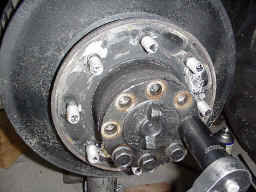
Click picture for larger image
|
Click picture for larger image
|
|
The FF shafts are removed. |
The square key and snap ring is removed. |
-
- After the drum is removed, the entire backing plate can be removed with the brake shoes and hardware intact. There is 4 bolts that hold the backing plate on.
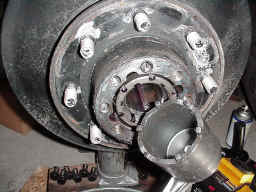
Click picture for larger image
|
Click picture for larger image
|
|
A six prong hub socket is used to remove the spindle nuts. |
The rusty backing plate and drum brakes are removed by removing the 4 bolts. |
-
- The drum has to be separated from the hub. All 8 studs from each drum must be removed. A press is good to use for this. Since we didn’t have access to a press, a brass block and a sledge is used to pound out all studs.
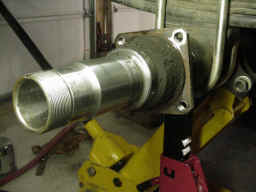
Click picture for larger image
|
Click picture for larger image
|
|
The bare spindle. |
The studs were pounded out with a brass block and the drum is separated from the hub. |
-
- The new rotors are installed on the hub. The studs are done by using an open lug nut and tightened with an impact. Anti-seize is used for this step. Again, a press would have been a better tool to use for this but we didn’t have access to one.
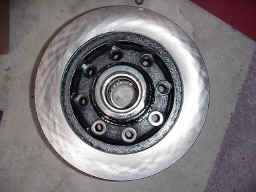
Click picture for larger image
|
Click picture for larger image
|
|
The new rotors are placed on the 14 bolt hub. |
It's a good time to replace the seal at this point. |
-
- The new caliper brackets are installed on the axle. Since we got the TSM kit, longer bolts were supplied. If the caliper brackets was purchased alone. a trip to the hardware store would be required. The bolts just need to be ½" longer. Thread lock is used on the bolts.

Click picture for larger image
|
Click picture for larger image
|
|
The caliper brackets with longer bolts. The bolts are 1/2 inch longer. |
Caliper brackets installed on the axle. |
-
- The hubs and new rotors are installed next. Before they are placed on the axle, it would be a good time to replace the seal. After the hub is installed, the spindle nut is tightened to the proper specs and the key/lockring is installed. The shafts can be installed next. RTV silicone or new gaskets can be used to seal the shafts.
|
Click picture for larger image
|
|
The stainless
steel braided hoses are used so the calipers can move in and out.
This also helps when the brakes are bled. |
-
- The calipers are mounted next. TSM suggested swapping sides
with the left and right calipers. By running the left caliper on
the right side and the right caliper on the left side of the
vehicle, it positions the e-brake arms correctly. If the calipers
aren’t swapped, the e-brake cable has to run underneath the
axle tube which isn’t good if you like rock crawling! The
only problem with changing sides is it positions the bleeder screw
upside down. This means the calipers have to be positioned so the
bleeder screw is upright and on the rotor. This is where the
flexible SS lines come in handy. The SS lines are connected to the
existing brake lines and then to the calipers. The caliper bolts
are not installed until the brakes are bled. A long screwdriver is
placed through the calipers into the rotors so they stay on the
rotors.
Note: DO NOT rotate the arms on the calipers. If they are rotated, the piston will be pushed out too far and the calipers will not fit over the rotors. If you take it apart, it’s a guarantee you will not get it together. We accidentally did this and had to take the caliper back to the parts store for a new one.
-
- An adjustable regulator was mounted above the rear axle. This is another optional item. You may be ok without it but we didn’t want to re-bleed the brakes if we really needed one.
|
Click picture for larger image
|
|
Not wanting
to take a chance, we decided to install this proportioning valve so
the rear brake pressure can be adjusted. |
-
- The brakes are bled using the usual brake sequence. Always work from the farthest tire to the closest. This means, right rear, left rear, right front, left front. The fronts shouldn’t need it but we installed new calipers in the front. It wouldn’t hurt to do the fronts and replenish the whole brake system with new fluid. An expensive one-man bleeder kit was purchased but it didn’t work. The two man bleeder method was used instead. Basically, just open the bleeder screw and yell to the other guy to push the brake pedal and hold. Then the bleeder valve is closed and the brakes can be released. This is repeated several times on each wheel. The brakes still felt spongy so the whole process was repeated 2 more times. Be sure to keep enough brake fluid in the reservoir. We went through two 32oz bottles of fluid before we got a firm pedal.
-
- The calipers can finally be rotated and bolted to the caliper brackets. Caliper bolts are tightened. The adjusting arm is rotated with vice-grips to get the calipers properly adjusted. If e-brake cables aren’t installed, the arm should be rotated every two months.
The rear disks definitely help when you really need to stop. With the 36" Swampers, it stops much quicker than the old drums. We also noted that less pressure has to applied to the brake pedal. The disk conversion is worth every penny considering it makes any 4x4 safer to drive.
We installed the 14 bolt FF kit but many kits are available. Other GM kits that that are available are the 14 bolt semi-float, 12 bolt, and 10 bolt. The calipers are used off a newer Cadilac since a smaller caliper is needed. TSM has disk brake conversions for most vehicles and is your complete source for components such as calipers, proportioning valves, custom or stainless brake lines, line-locks & more.
14 bolt FF Price (as of Nov 2000)
- The TSM 14 bolt FF kit, which includes bolts, washers, caliper
brackets, and GM rotors is $299.95.
- Loaded calipers without a parking brake is $100 including
core.
- Parking brake calipers are $300.00 with the arm, spring and bracket for the cable which includes the core charge.
- 8" SS or rubber brake lines are $50 a pair
chevy@off-road.com.
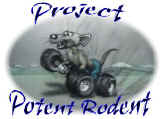
Back to Project Potent Rodent

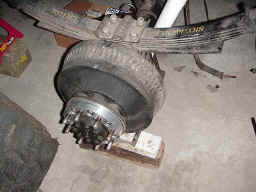
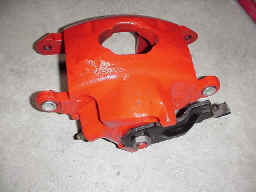
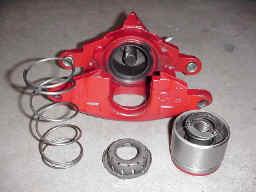
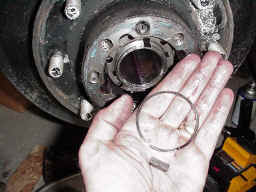
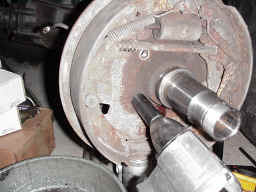
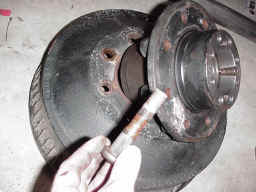
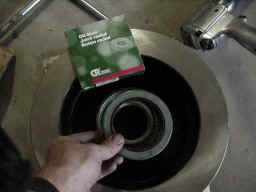
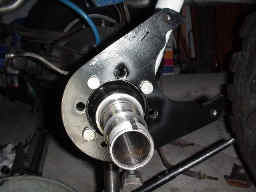
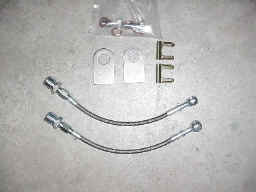
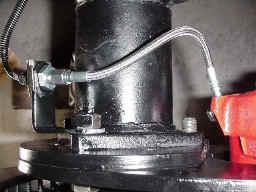
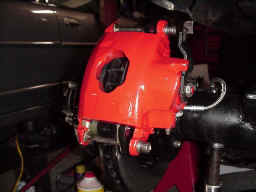
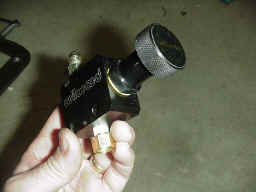
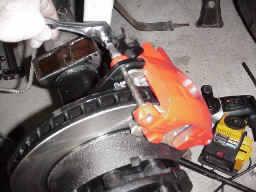

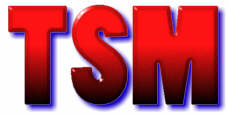
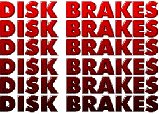
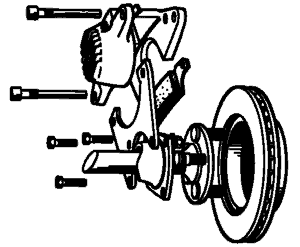

 Your Privacy Choices
Your Privacy Choices